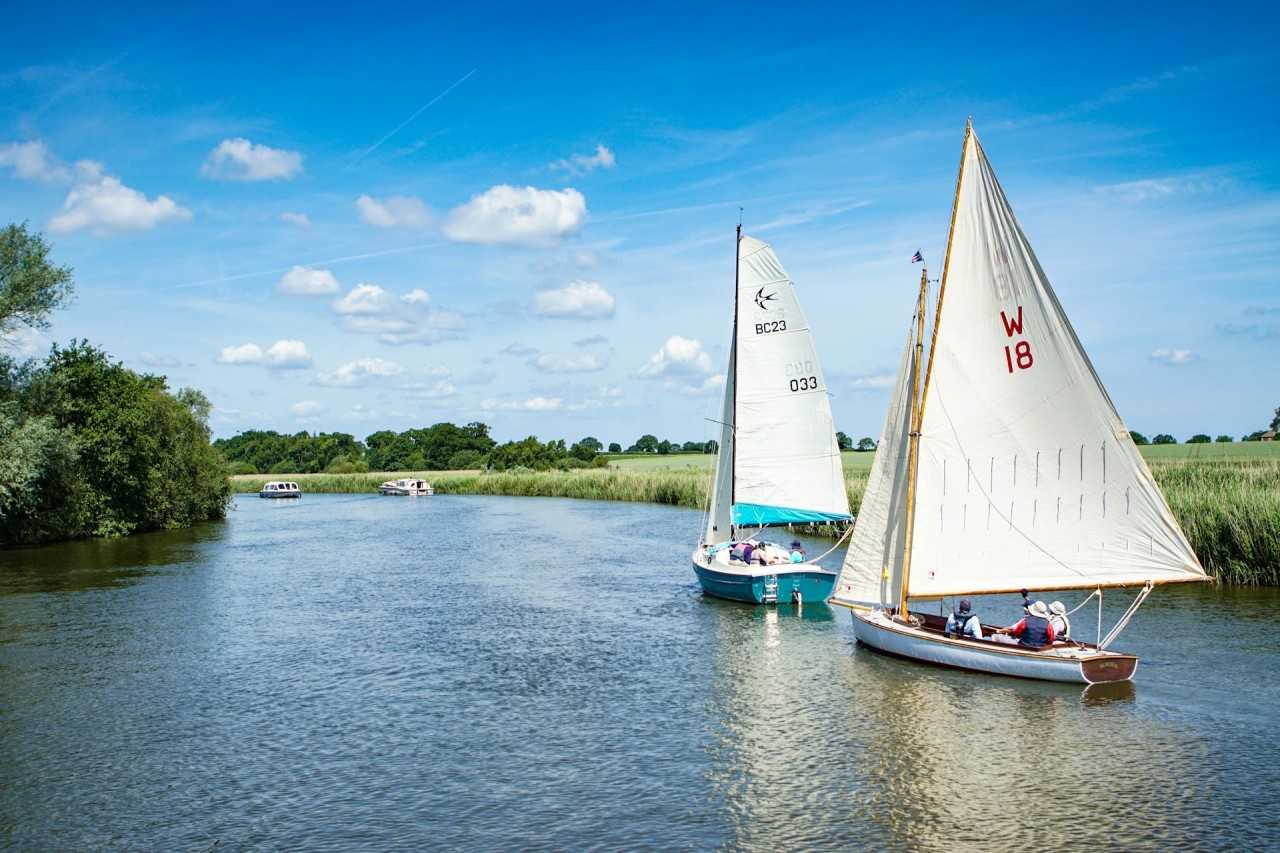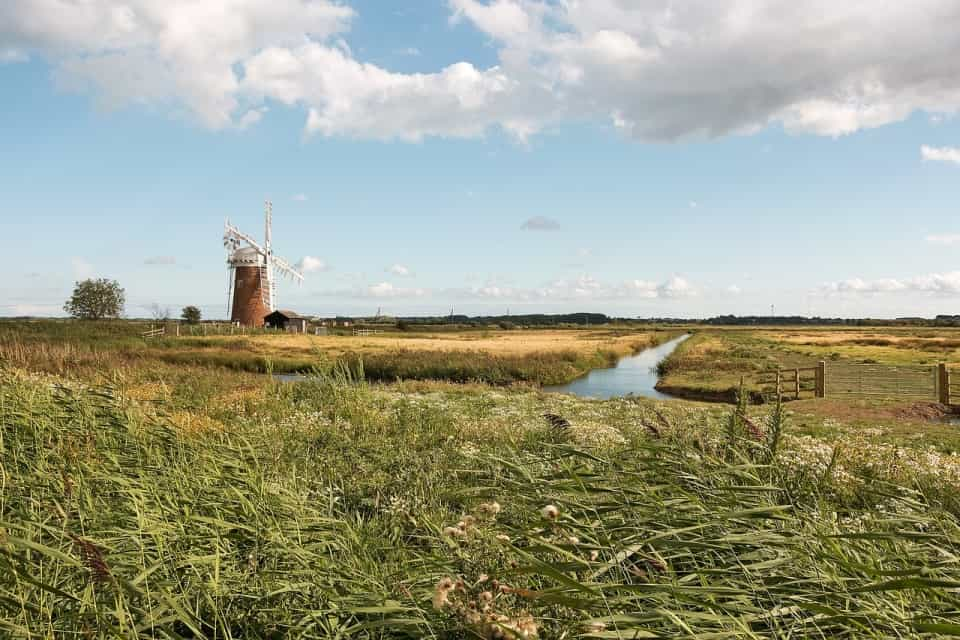The Broads Area Guide

The smallest of the UK’s national parks, The Broads covers 117 square miles (303 km2) of land in East Anglia. Stretching out along the course of more than 70 waterways, it’s the UK's largest protected wetland area and a popular destination for visitors – more than 7 million people visit the area each year.
There’s a lot of fabulous scenery throughout the park, but what The Broads is particularly well known for is its biodiversity. The diverse habitats around the waterways are home to more than a quarter of Britain’s rarest species, making it one of the most wildlife-rich areas of the UK.
Where are the Broads?
Many people refer to this area as ‘the Norfolk Broads’, but in fact The Broads actually covers parts of both Norfolk and Suffolk, close to the east coast of England. Norfolk’s biggest city, Norwich, sits just to the west of the Broads on the River Yare.
Despite being the smallest national park by area, the unique shape of The Broads (covering the area around several rivers and water courses) means that its land is spread out, rather than being a single compact area. This means that several towns – such as Wroxham, Stalham, Reedham and Beccles – can all claim to be ‘the gateway to the Broads'.
Not sure which waterway to start with? Hickling Broad, in the north of the area, is the largest of the Broads and an excellent place for wildlife-spotting. Further south, the River Bure and Salhouse Broad are well known for their particularly beautiful views.
How deep are the Norfolk Broads?
The seven rivers and 13 of the broads are navigable by small boats, making a total navigable length of 110 miles (177 kilometres), with just one lock across the whole network – Mutford Lock, on the River Waveney near Lowestoft. You can bring your own boat as long as you pay a toll and check that the size is suitable, but the safest way to ensure a boat of the correct size is to hire one locally, or join a cruise on a traditional wooden wherry.
How were the Norfolk Broads formed?
Given that the Broads National Park is now known for its biodiversity, it may surprise you to know that the landscape is actually man-made. The peat in the ground was dug out for fuel supplies in medieval times, leaving deep trenches that gradually filled with water and became the wildlife-rich waterways we see today.
Things to do in the Norfolk Broads

The wetland landscape of the park means that the best of the scenery and nature is away from the roadside. This is a place where you'll definitely want to get out of the car and explore the peaceful waterways on foot, by bike or in a boat. The park's flat landscape makes it fairly easy to walk or cycle around, and there are a number of accessible trails around too.
When you're not out exploring the waterways, you may also like to plan trips to places like Wroxham Barns, BeWILDerwood Norfolk and Pettitts Animal Adventure Park. Look out also for special events – several local towns and villages host things like music festivals, food festivals, heritage events and children’s workshops.
When to visit the Broads
There may be a lot of water around at ground level, but you may well not find much coming from the sky – East Anglia is the driest part of the UK, making the Broads an attractive year-round destination and a good bet for a low-season break with decent weather.
Summer is the busiest time in the Broads, as the warm weather and longer days lend themselves well to boating and other outdoor activities. However, spring and autumn are also great times to plan a break to the Broads – spring flowers or autumn leaves bring extra colour to the scenery and you're more likely to find crowd-free places to walk or watch wildlife.
Travelling outside of the summer season also helps to reduce the impact of tourism on the natural environment. Whenever you visit, you can contribute to the park's sustainability by buying local produce, taking your litter home and obeying speed limits on the waterways.







